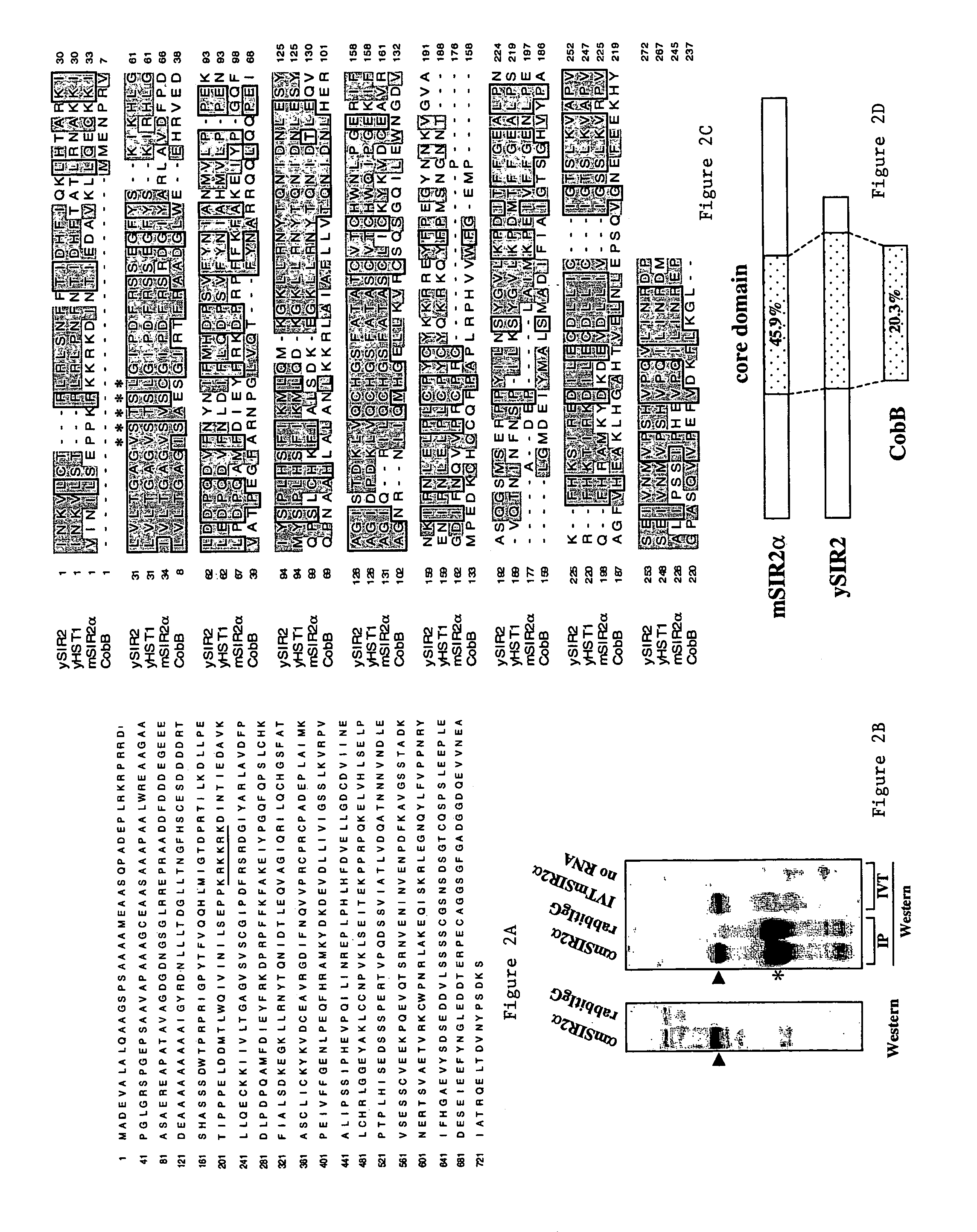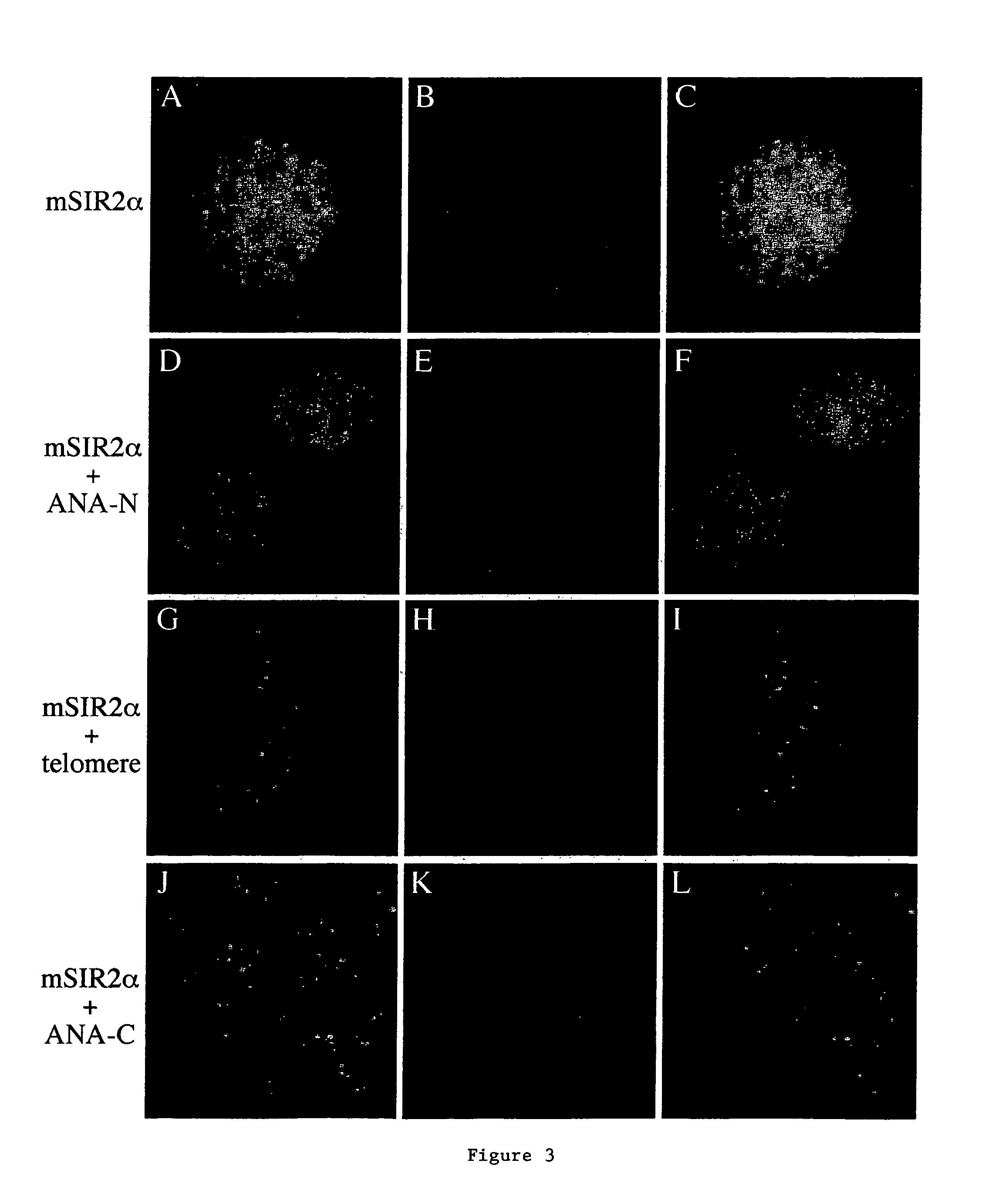Methods for identifying agents that alter NAD-dependent deacetylation activity of a SIR2 protein
a technology of nad-dependent deacetylation and sir2 protein, which is applied in the field of methods for identifying agents that alter the nad-dependent deacetylation activity of sir2 protein, can solve the problems of increasing the likelihood of death, and reducing the nad-dependent deacetylation activity, so as to increase the mono-adp-ribosylation and the life span of the cell. s a a a a a sir2 protein nad-dependent deacetylation activity and a technology of a sir2 protein nad-dependent deacetylation activity and a technology of a sir2 which is applied in the field of which is applied in the field of sir2 protein-dependent activity-dependent protein-s a technology of a sir2 protein nad-dependent deacetylation activity and a technology of a sir2 protein and a technology of a technology of a sir2 protein and na
- Summary
- Abstract
- Description
- Claims
- Application Information
AI Technical Summary
Benefits of technology
Problems solved by technology
Method used
Image
Examples
Embodiment Construction
[0105]The invention relates to the discovery that Sir2 proteins, which play a part in the life span control mechanisms in eukaryotic cells, alter the NAD-dependent acetylation status of histone proteins and mono-ADP-ribosylation of nuclear proteins. In particular, the invention pertains to the discovery that Sir2 (e.g., murine Sir2α) alters the NAD-dependent acetylation status (e.g., removes and / or adds an acetyl group) of proteins (e.g., nuclear proteins such as histone proteins H2B, H2A, H3 or H4) and mono-ADP-ribosylation of nuclear histone proteins. In particular, the mono-ADP-ribosylation of nuclear proteins is performed by the core domain of Sir2, the Sir2 protein, a fragment of the Sir2 protein (e.g., SEQ ID NOS: 1, 2, 4, 9, 10, 11, 12, 14, 19, 20, 21 or 26), or an agonist of Sir2. As a result of this discovery, methods for identifying agents (e.g., agonists) which alter the NAD-dependent acetylation status of nuclear proteins, such as histone proteins, and / or their mono-ADP-...
PUM
| Property | Measurement | Unit |
|---|---|---|
| pH | aaaaa | aaaaa |
| pH | aaaaa | aaaaa |
| temperature | aaaaa | aaaaa |
Abstract
Description
Claims
Application Information
 Login to View More
Login to View More - R&D
- Intellectual Property
- Life Sciences
- Materials
- Tech Scout
- Unparalleled Data Quality
- Higher Quality Content
- 60% Fewer Hallucinations
Browse by: Latest US Patents, China's latest patents, Technical Efficacy Thesaurus, Application Domain, Technology Topic, Popular Technical Reports.
© 2025 PatSnap. All rights reserved.Legal|Privacy policy|Modern Slavery Act Transparency Statement|Sitemap|About US| Contact US: help@patsnap.com



